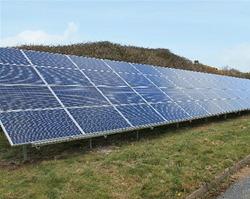
A WATER company in the South West of England has announced it will use solar energy to power even more of its sewers.
Last year, South West Water generated more than one million kilowatt hours of solar energy, helping to power 23 water and sewage treatment works in Devon and Cornwall.
It has now finished installing even more photovoltaic (PV) panels at seven of its sites in Devon and laid edge to edge they would cover a staggering 46 tennis courts.
Between them, the seven new sites have a combined capacity of 400kW and have the potential to generate a further 410,000 kWh of energy per year, enough to power 124 homes. They range in size from 24 kW at Willand Water Pumping Station, near Tiverton, to 150 kW (the company's biggest installation to date) at Yelland Sewage Treatment Works, near Barnstaple.
James Pearce, Project Manager for South West Water's H5O partnership, said: "We installed our first batch of solar panels at six sites in December 2011, and added another 17 sites in March last year.
"To have generated over a million kilowatt hours of green energy is a fantastic achievement and is helping us to reduce electricity costs at these sites.
"Adding more solar panels is part of our drive to reduce the company's carbon footprint and help combat climate change. We also operate hydro-electric and biogas plants and a wind turbine, and the new solar panels will help to further develop our renewable energy capability."
The solar panels cost in the region of £3.65 million in total, funded by South West Water. The power generated by the panels will be used to help power the treatment works. The savings from the reduction in electricity purchased from the national grid and the income from the feed-in tariff will help keep energy costs down at each site.
As a company South West Water has completed many energy-saving initiatives across the business, ranging from its pump efficiency programme to a series of low-energy lighting refits and a regional optimisation of UV disinfection plants, collectively saving the company around five million kWh last year.
